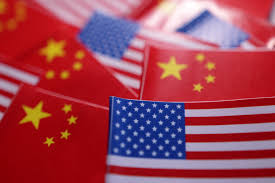
President Donald Trump revealed this week that Chinese President Xi Jinping personally phoned him as Washington and Beijing engage in negotiations over reciprocal tariffs, marking a rare high-level acknowledgment of direct communication in the protracted U.S.–China trade war. Trump declined to detail when the call took place or the substance of their conversation, insisting only, "He's called. And I don't think that's a sign of weakness on his behalf," underscoring his view that direct outreach from Xi reflects respect for U.S. negotiating leverage.
Scope of Ongoing Negotiations
In an interview published by Time magazine, Trump said his administration is “talking with China to strike a tariff deal,” and forecast that these negotiations would conclude within “three or four weeks”. He claimed to have brokered 200 separate “tariff deals” with various trading partners since taking office and insisted he would personally choose which agreements move forward. Drawing on his favorite analogy, Trump likened the U.S. economy to a high-end department store in which he sets the terms: “I meet with the companies, and then I set a fair price… and they can pay it, or they don't have to pay it”. When pressed on whether retaining tariffs as high as 50 percent after a year would still count as success, the president responded simply, “Total victory”.
The Trump administration has imposed tariffs as high as 145 percent on selected Chinese imports, prompting Beijing to retaliate with duties reaching 125 percent on U.S. goods. Treasury Secretary Scott Bessent has signaled that such excessive rates cannot stand if trade talks are to advance, urging that “excessively high tariffs between the U.S. and China will have to come down before negotiations can proceed”. The White House has hinted at potential reductions but maintains that any roll‐backs will be conditioned on concrete commitments from China on issues like intellectual property protection and market access.
Beijing’s Official Response
Despite the president’s disclosures, China’s Ministry of Foreign Affairs and Commerce Ministry have publicly rejected U.S. assertions of formal talks. Beijing has called on Washington to cancel all “unilateral” tariff measures as a prerequisite for any meaningful discussions. Senior spokespeople reiterated that China has “not conducted consultations or negotiations on tariffs, let alone reached an agreement,” dismissing reports of engagement as “false news”. Meanwhile, sources indicate China may consider lowering its own retaliatory rates from 125 percent to between 50 and 65 percent if the U.S. makes the first move to ease duties.
Global financial markets displayed muted optimism following Trump’s revelations. London’s FTSE futures and Hong Kong’s Hang Seng rallied modestly on expectations that a partial tariff rollback could alleviate trade tensions. U.S. stock futures also showed gains, led by technology shares, though they struggled to sustain early advances amid skepticism over details. Canada’s TSX futures dipped 0.3 percent as commodity prices fell and U.S.–China uncertainties persisted, underlining the fragility of investor sentiment. Commodity markets were similarly affected: gold slid over 1 percent, copper weakened on demand worries, and oil prices fell amid oversupply concerns.
Analysts note that Trump’s aggressive tariff strategy began this spring with a sweeping 10 percent levy on all imports, escalating to punitive 145 percent duties on Chinese goods after intermittent pauses designed to project toughness . Beijing initially courted the president, but by April it adopted a “never yield” posture, raising tariffs in defiance of U.S. demands . The latest high‐level outreach—Xi’s call—could signal Beijing’s willingness to negotiate, though Chinese officials stress that preliminary, working‐level talks must pave the way for any summit‐level engagement.
Inside the U.S. capital, Republicans largely portray Trump’s negotiation tactics as proof of his deal‐making prowess, while some Democrats warn that prolonged tariff battles risk undermining economic growth and raising consumer prices . Lawmakers across the aisle have pressed for greater transparency on the content and objectives of the Xi call, seeking assurances that agricultural and manufacturing communities will not bear the brunt of indefinite tariffs . Senate Finance Committee members have demanded briefing documents outlining each stage of the talks and any concessions under consideration.
Next Steps and Unresolved Questions
Trump promises to finalize negotiations swiftly, yet questions remain over sequencing: will the U.S. reduce its duties first, or issue conditional commitments before China eases its retaliatory levies? The administration faces pressure to clarify whether the anticipated tariff relief will be broad or targeted at key sectors such as technology and agriculture. With Xi’s phone call offering a rare glimpse of top‐level engagement, all eyes now turn to whether this high‐stakes gambit can break the deadlock or simply set the stage for another cycle of strategic brinkmanship.
(Source:www.newsweek.com)
Scope of Ongoing Negotiations
In an interview published by Time magazine, Trump said his administration is “talking with China to strike a tariff deal,” and forecast that these negotiations would conclude within “three or four weeks”. He claimed to have brokered 200 separate “tariff deals” with various trading partners since taking office and insisted he would personally choose which agreements move forward. Drawing on his favorite analogy, Trump likened the U.S. economy to a high-end department store in which he sets the terms: “I meet with the companies, and then I set a fair price… and they can pay it, or they don't have to pay it”. When pressed on whether retaining tariffs as high as 50 percent after a year would still count as success, the president responded simply, “Total victory”.
The Trump administration has imposed tariffs as high as 145 percent on selected Chinese imports, prompting Beijing to retaliate with duties reaching 125 percent on U.S. goods. Treasury Secretary Scott Bessent has signaled that such excessive rates cannot stand if trade talks are to advance, urging that “excessively high tariffs between the U.S. and China will have to come down before negotiations can proceed”. The White House has hinted at potential reductions but maintains that any roll‐backs will be conditioned on concrete commitments from China on issues like intellectual property protection and market access.
Beijing’s Official Response
Despite the president’s disclosures, China’s Ministry of Foreign Affairs and Commerce Ministry have publicly rejected U.S. assertions of formal talks. Beijing has called on Washington to cancel all “unilateral” tariff measures as a prerequisite for any meaningful discussions. Senior spokespeople reiterated that China has “not conducted consultations or negotiations on tariffs, let alone reached an agreement,” dismissing reports of engagement as “false news”. Meanwhile, sources indicate China may consider lowering its own retaliatory rates from 125 percent to between 50 and 65 percent if the U.S. makes the first move to ease duties.
Global financial markets displayed muted optimism following Trump’s revelations. London’s FTSE futures and Hong Kong’s Hang Seng rallied modestly on expectations that a partial tariff rollback could alleviate trade tensions. U.S. stock futures also showed gains, led by technology shares, though they struggled to sustain early advances amid skepticism over details. Canada’s TSX futures dipped 0.3 percent as commodity prices fell and U.S.–China uncertainties persisted, underlining the fragility of investor sentiment. Commodity markets were similarly affected: gold slid over 1 percent, copper weakened on demand worries, and oil prices fell amid oversupply concerns.
Analysts note that Trump’s aggressive tariff strategy began this spring with a sweeping 10 percent levy on all imports, escalating to punitive 145 percent duties on Chinese goods after intermittent pauses designed to project toughness . Beijing initially courted the president, but by April it adopted a “never yield” posture, raising tariffs in defiance of U.S. demands . The latest high‐level outreach—Xi’s call—could signal Beijing’s willingness to negotiate, though Chinese officials stress that preliminary, working‐level talks must pave the way for any summit‐level engagement.
Inside the U.S. capital, Republicans largely portray Trump’s negotiation tactics as proof of his deal‐making prowess, while some Democrats warn that prolonged tariff battles risk undermining economic growth and raising consumer prices . Lawmakers across the aisle have pressed for greater transparency on the content and objectives of the Xi call, seeking assurances that agricultural and manufacturing communities will not bear the brunt of indefinite tariffs . Senate Finance Committee members have demanded briefing documents outlining each stage of the talks and any concessions under consideration.
Next Steps and Unresolved Questions
Trump promises to finalize negotiations swiftly, yet questions remain over sequencing: will the U.S. reduce its duties first, or issue conditional commitments before China eases its retaliatory levies? The administration faces pressure to clarify whether the anticipated tariff relief will be broad or targeted at key sectors such as technology and agriculture. With Xi’s phone call offering a rare glimpse of top‐level engagement, all eyes now turn to whether this high‐stakes gambit can break the deadlock or simply set the stage for another cycle of strategic brinkmanship.
(Source:www.newsweek.com)














